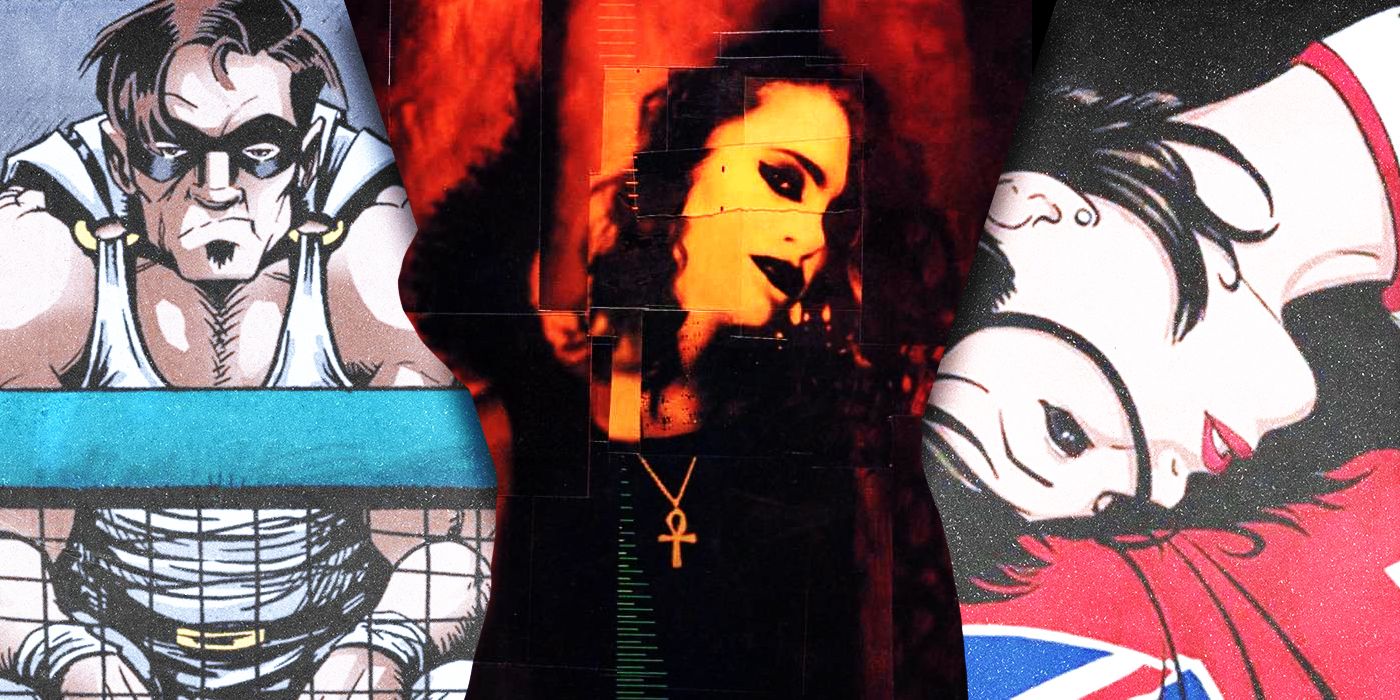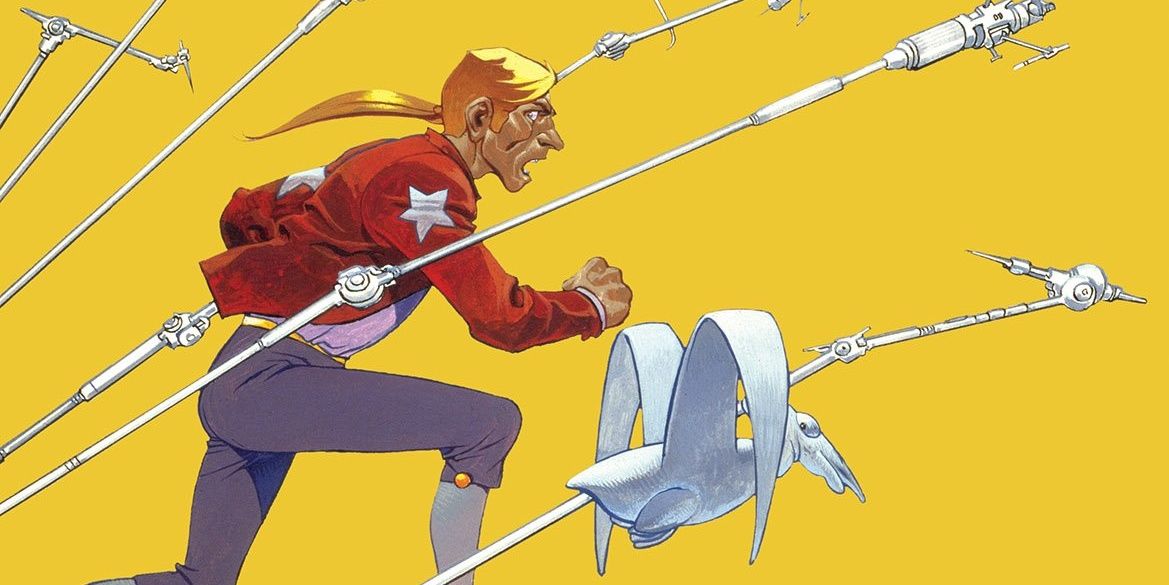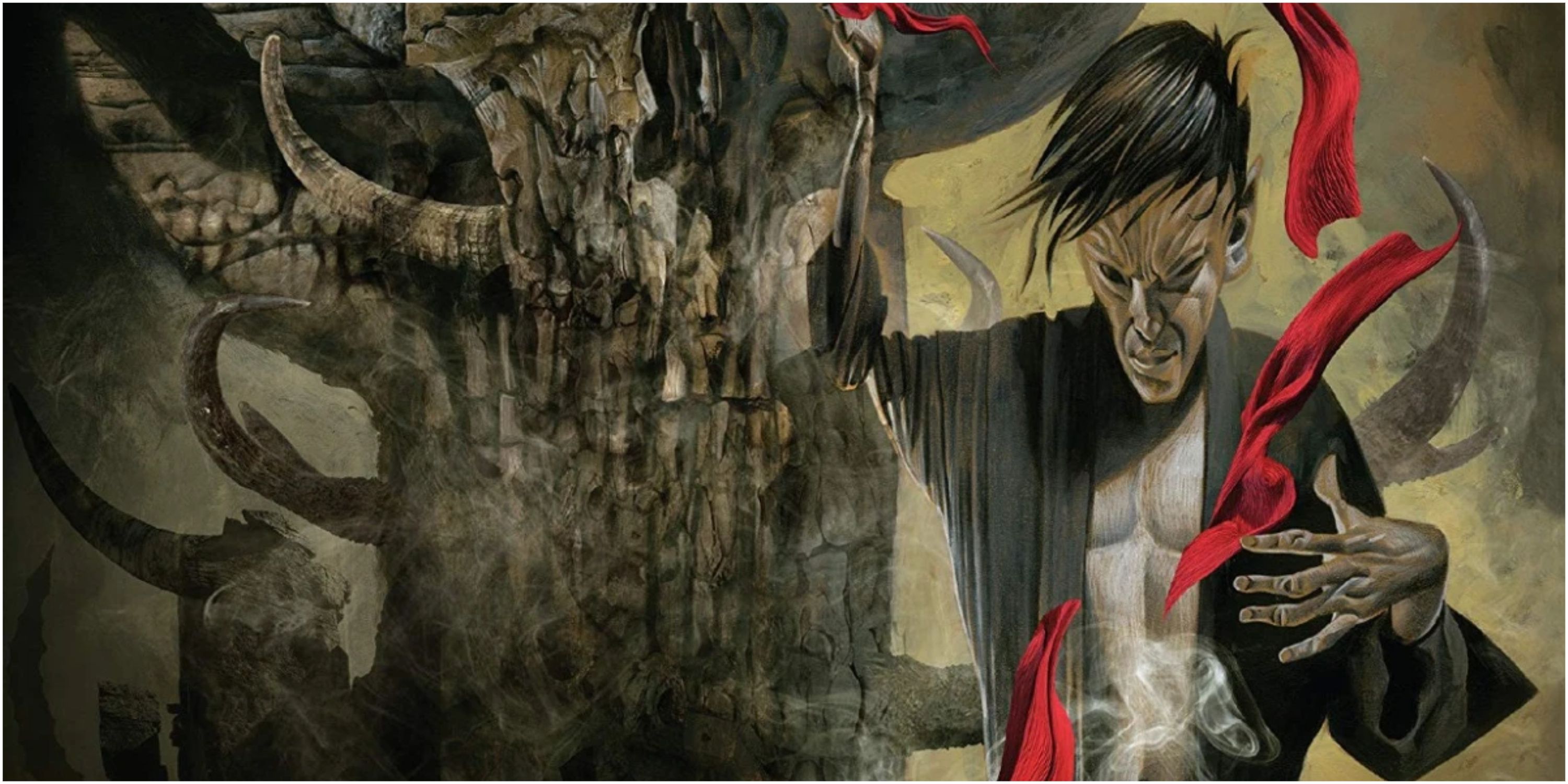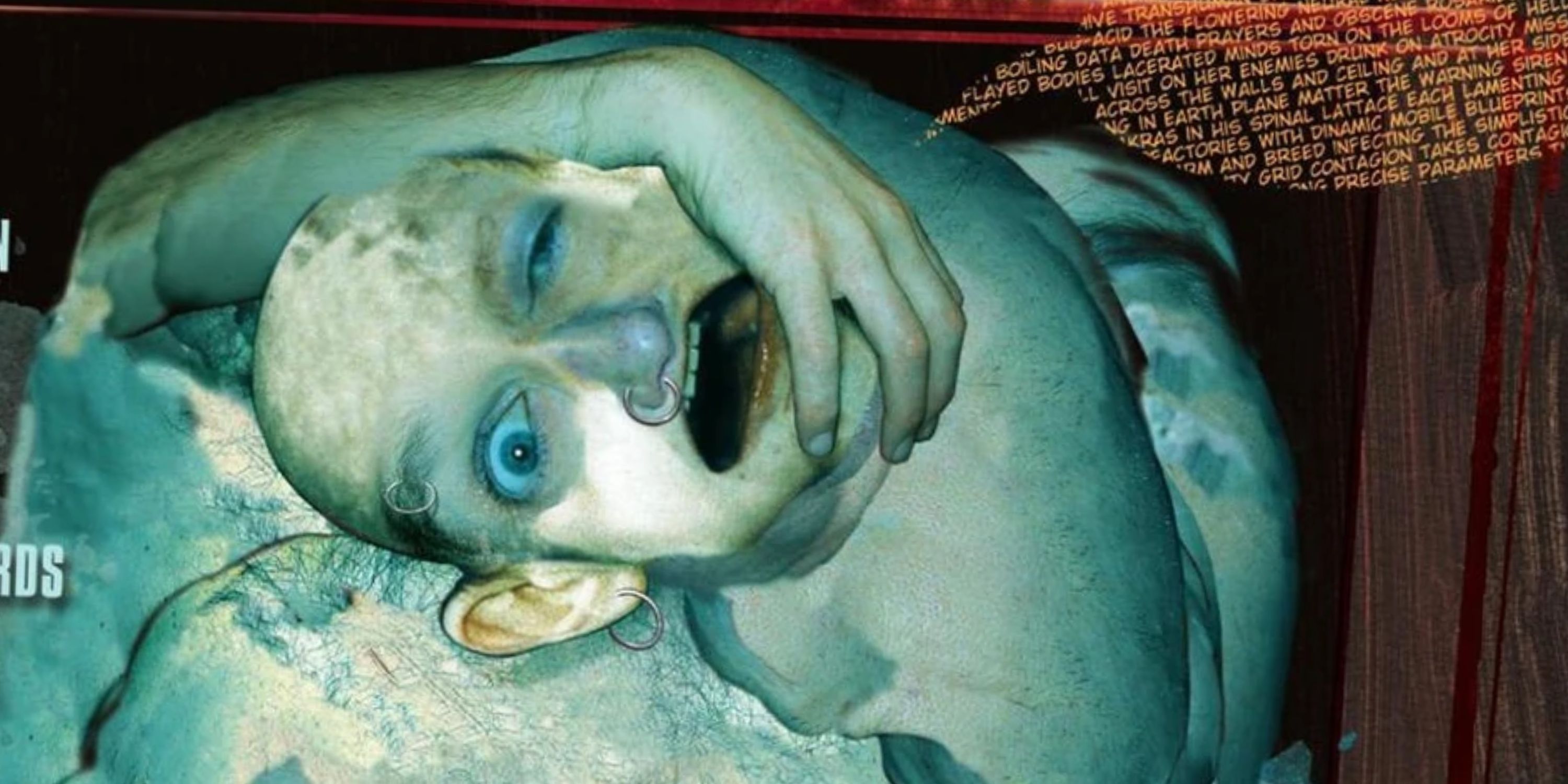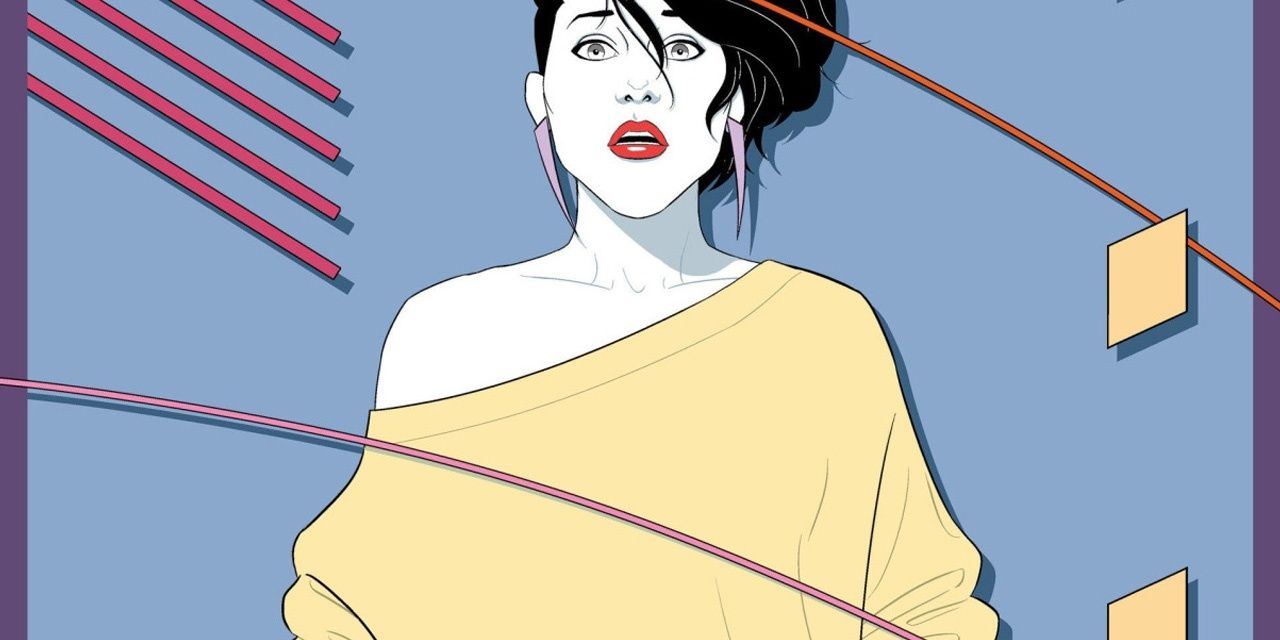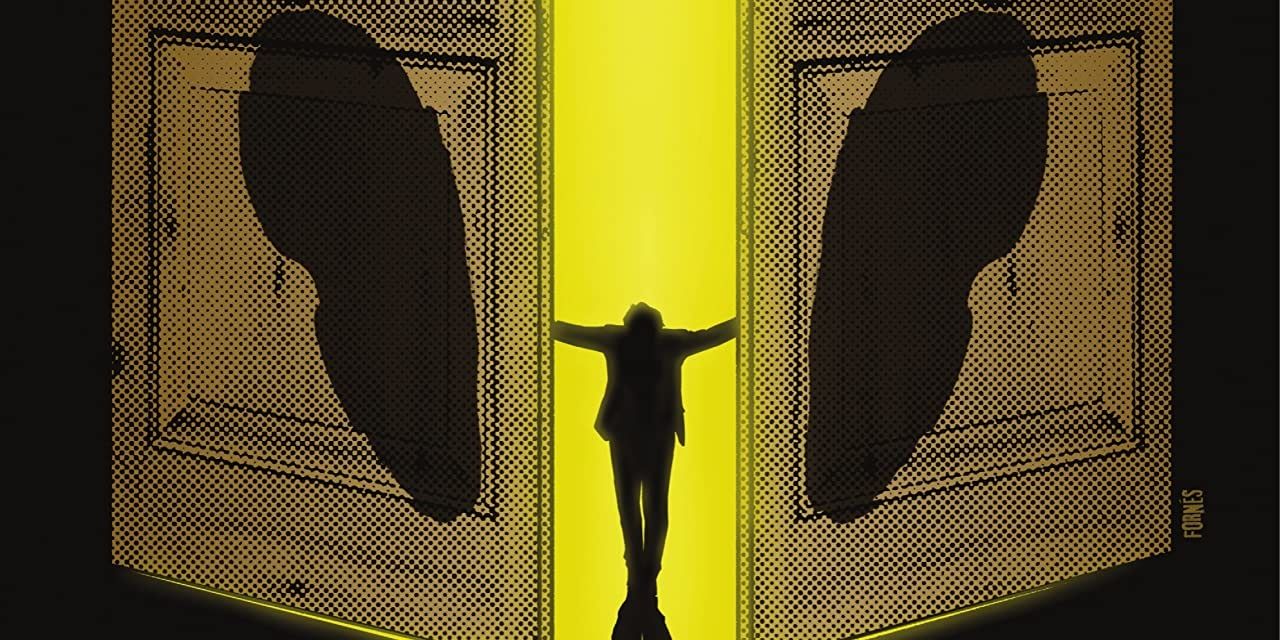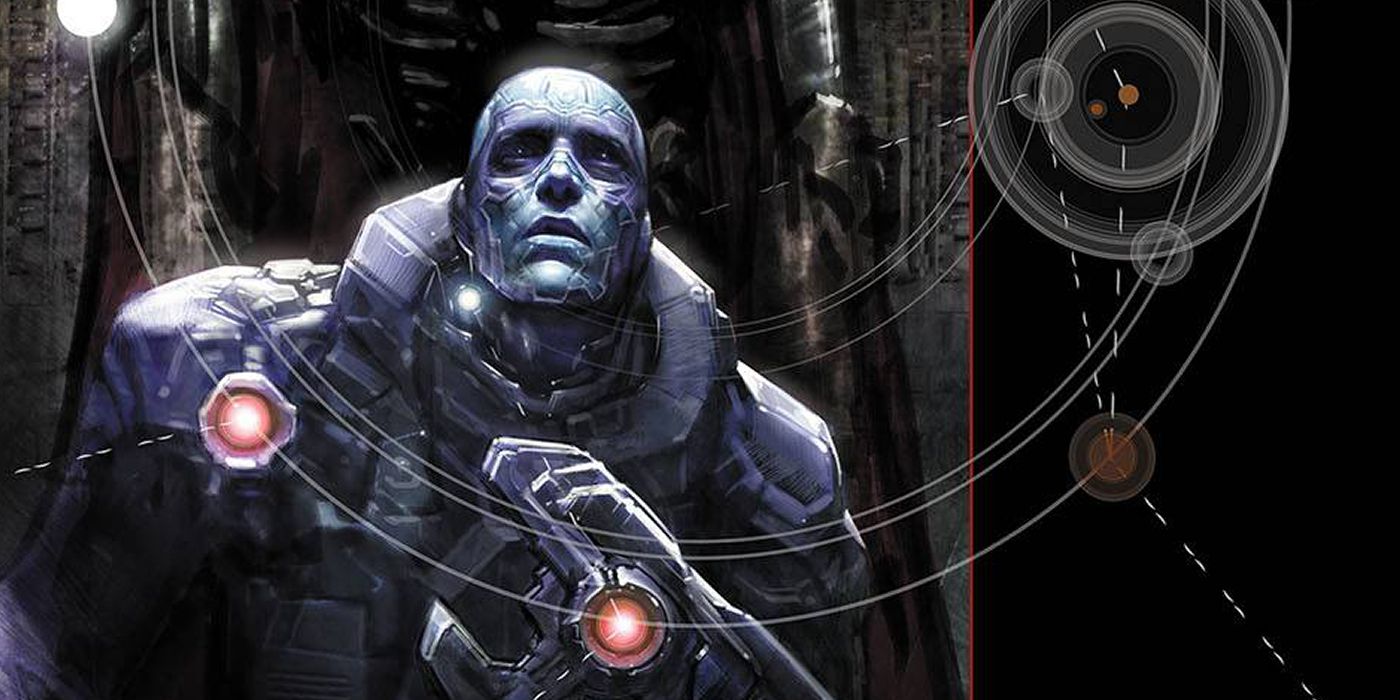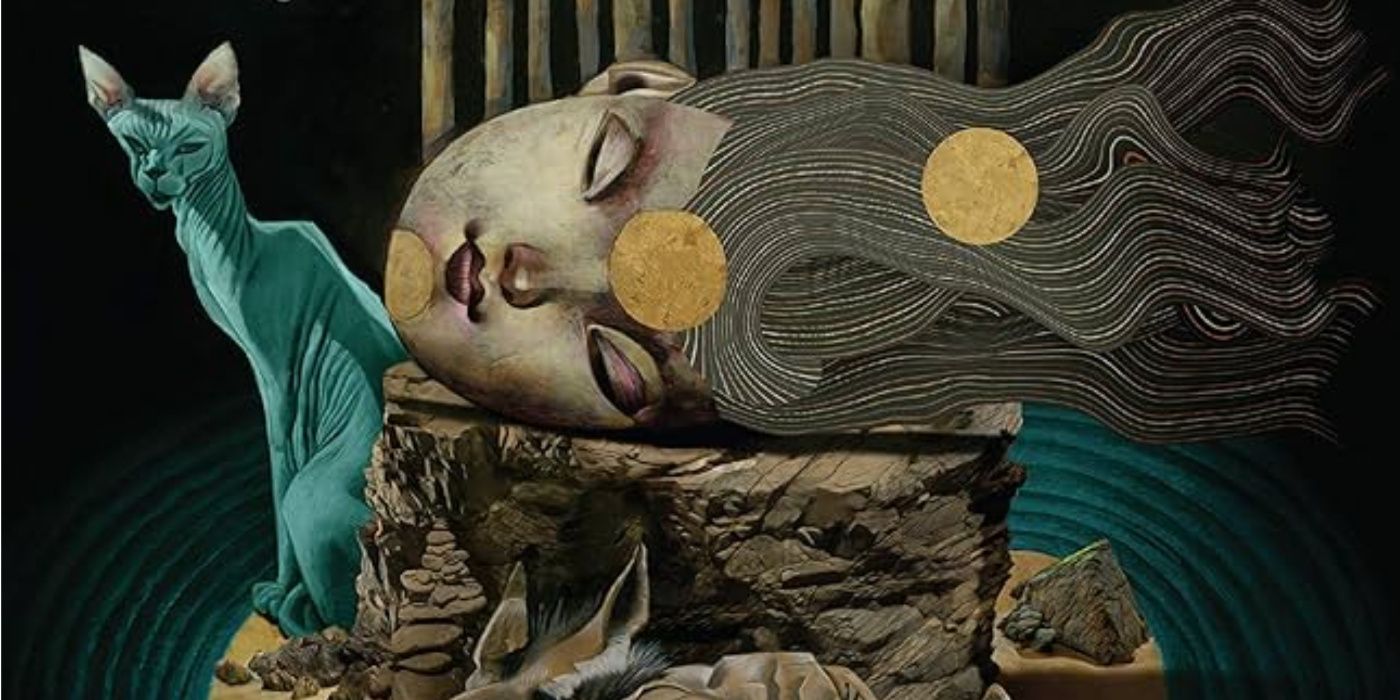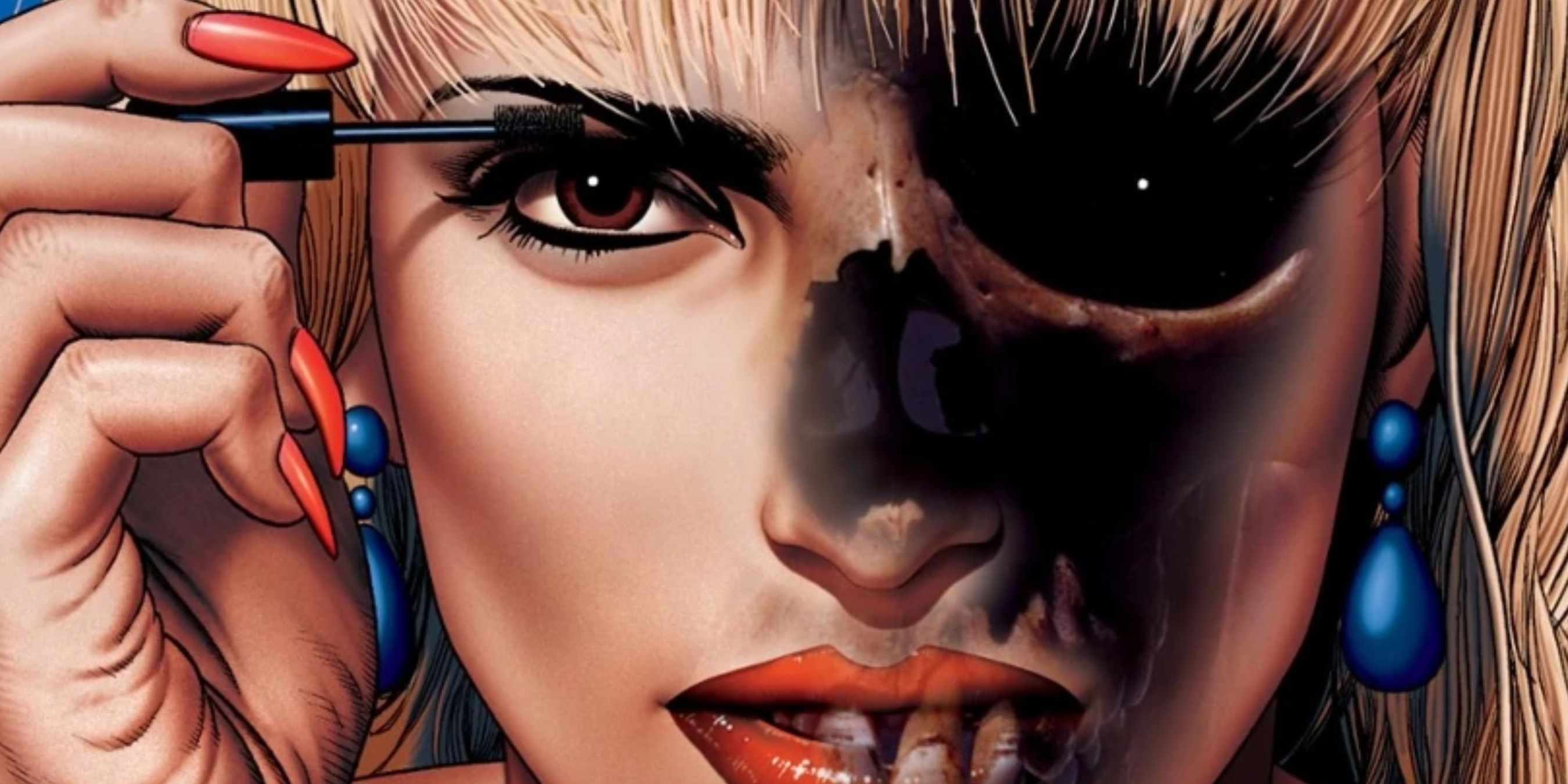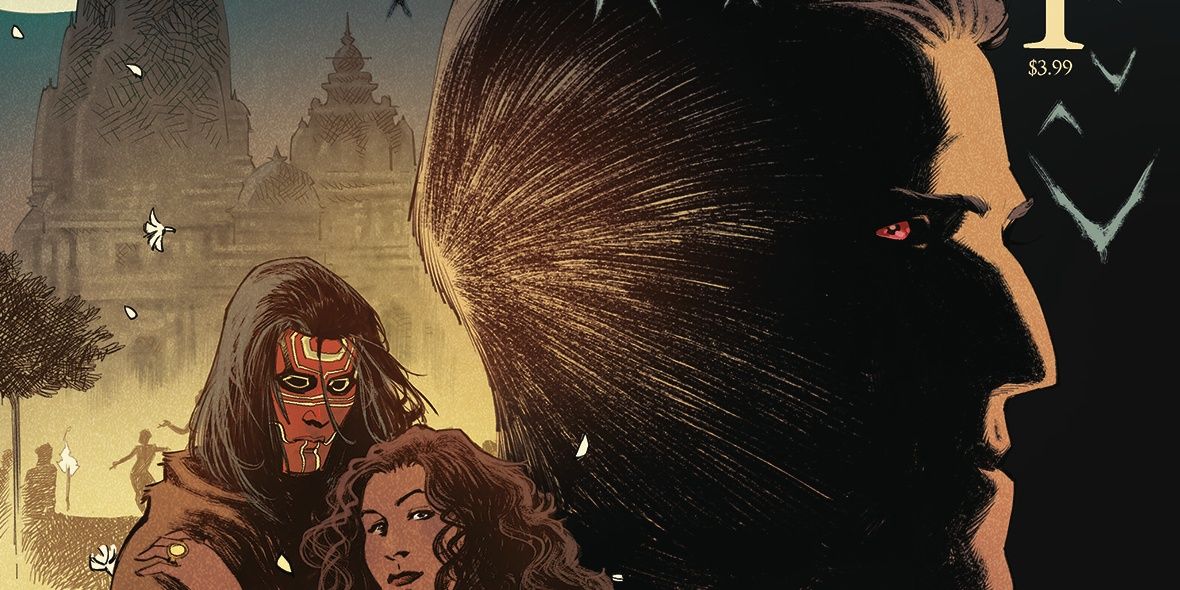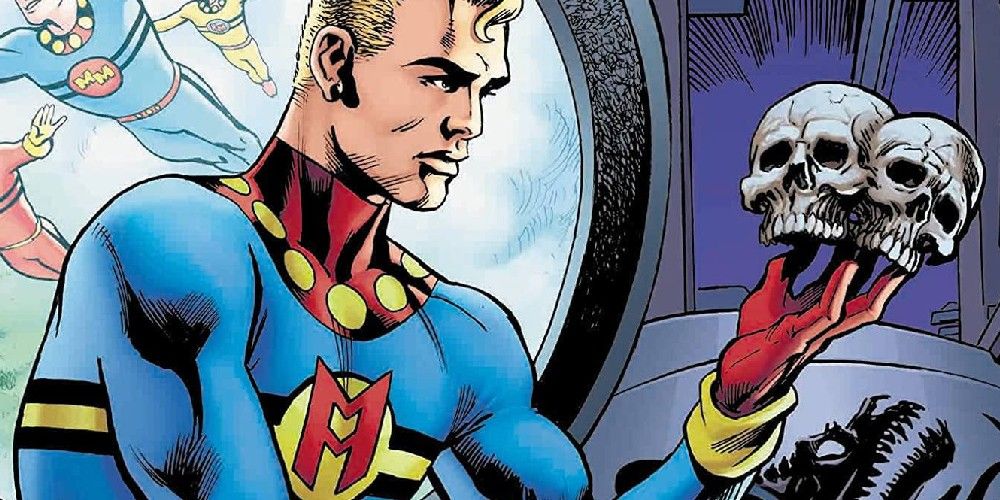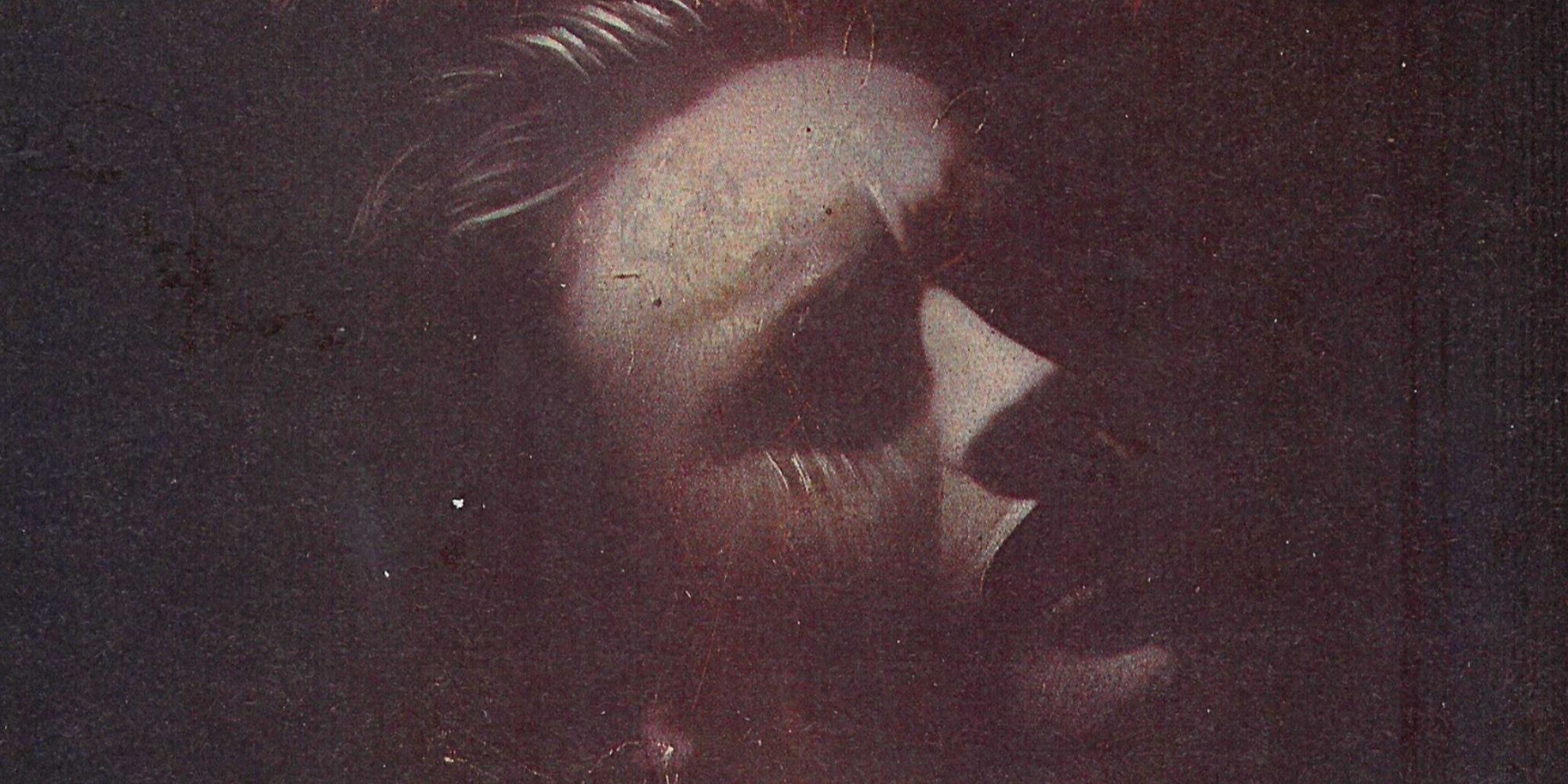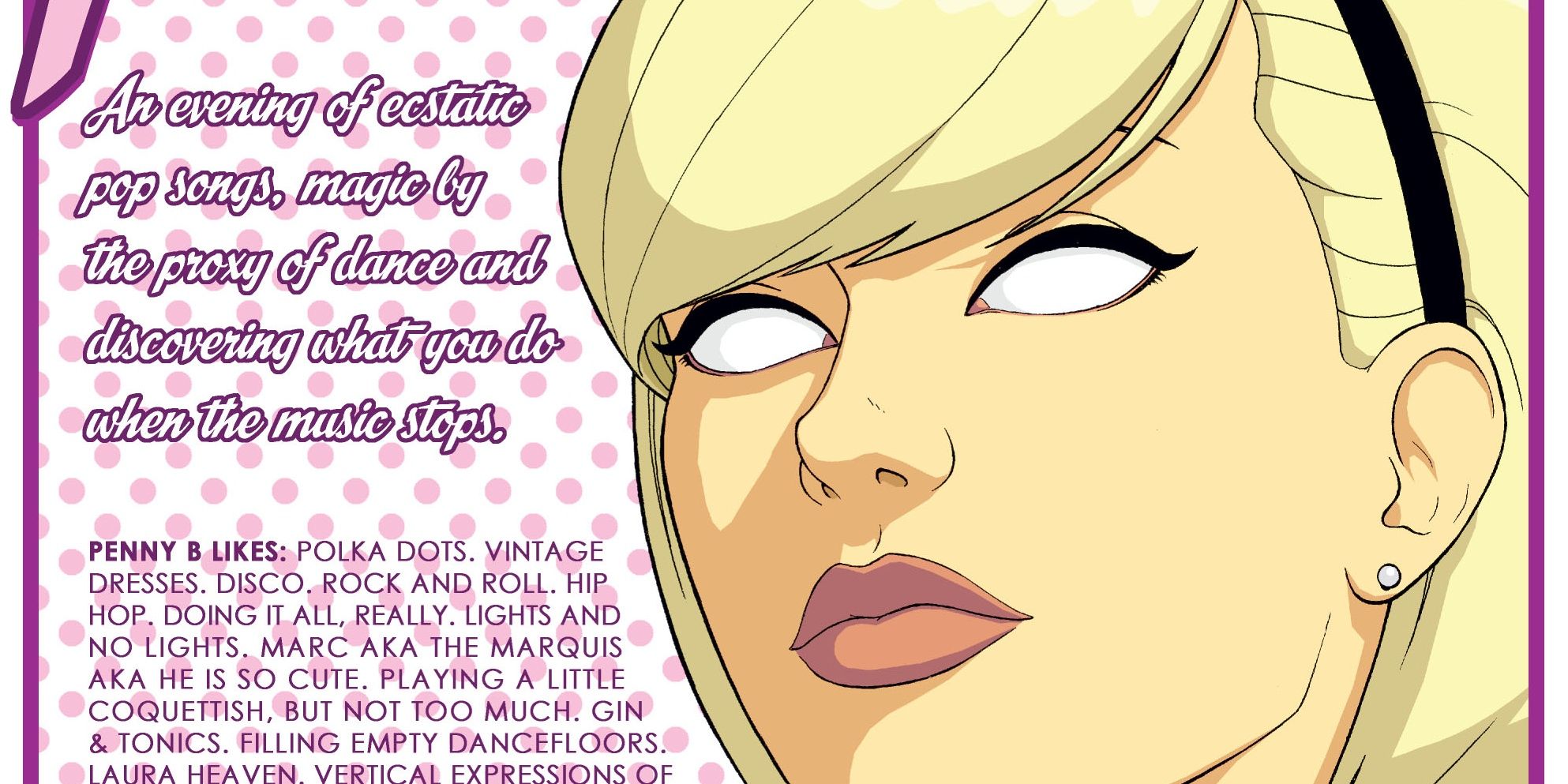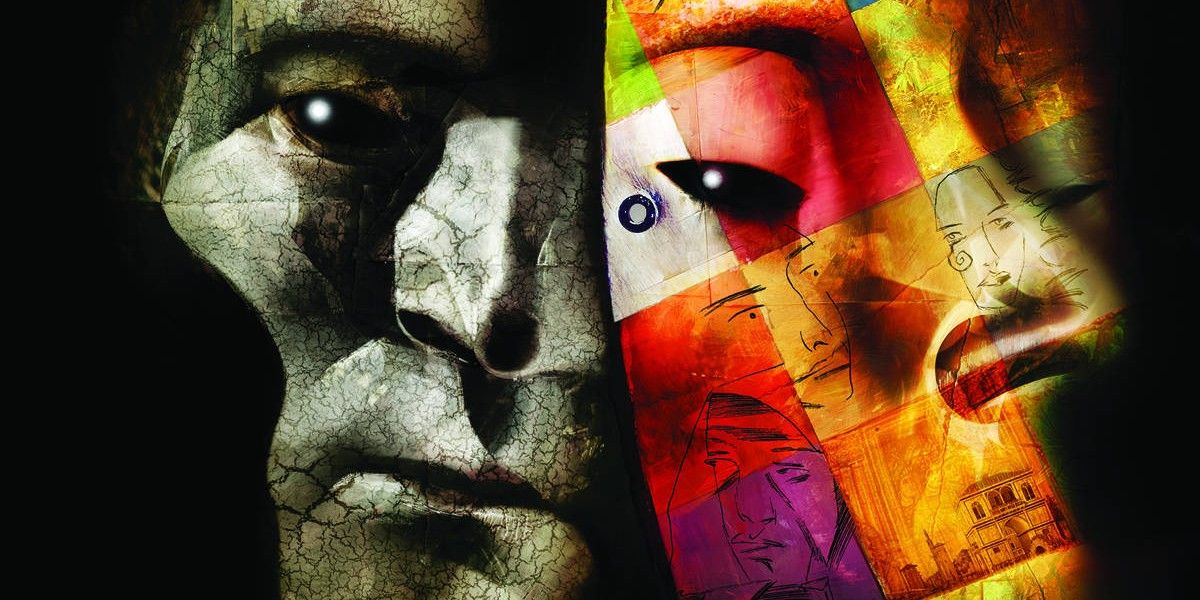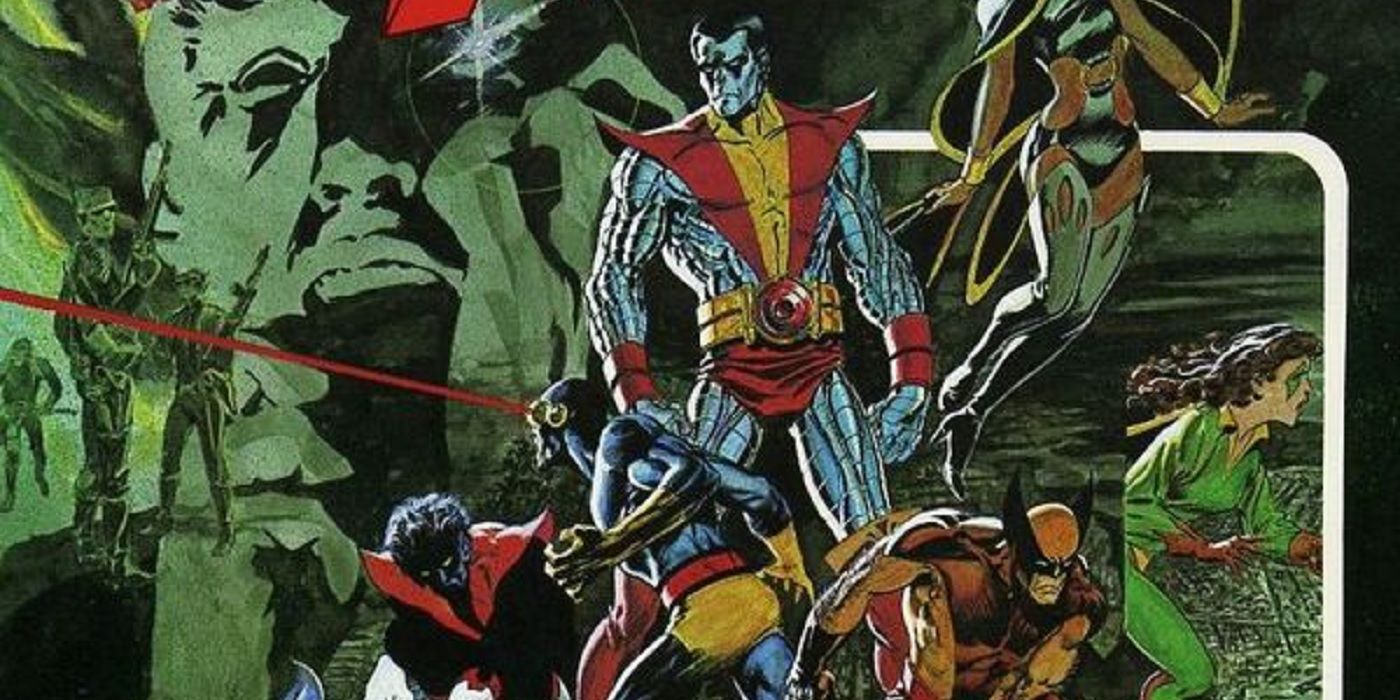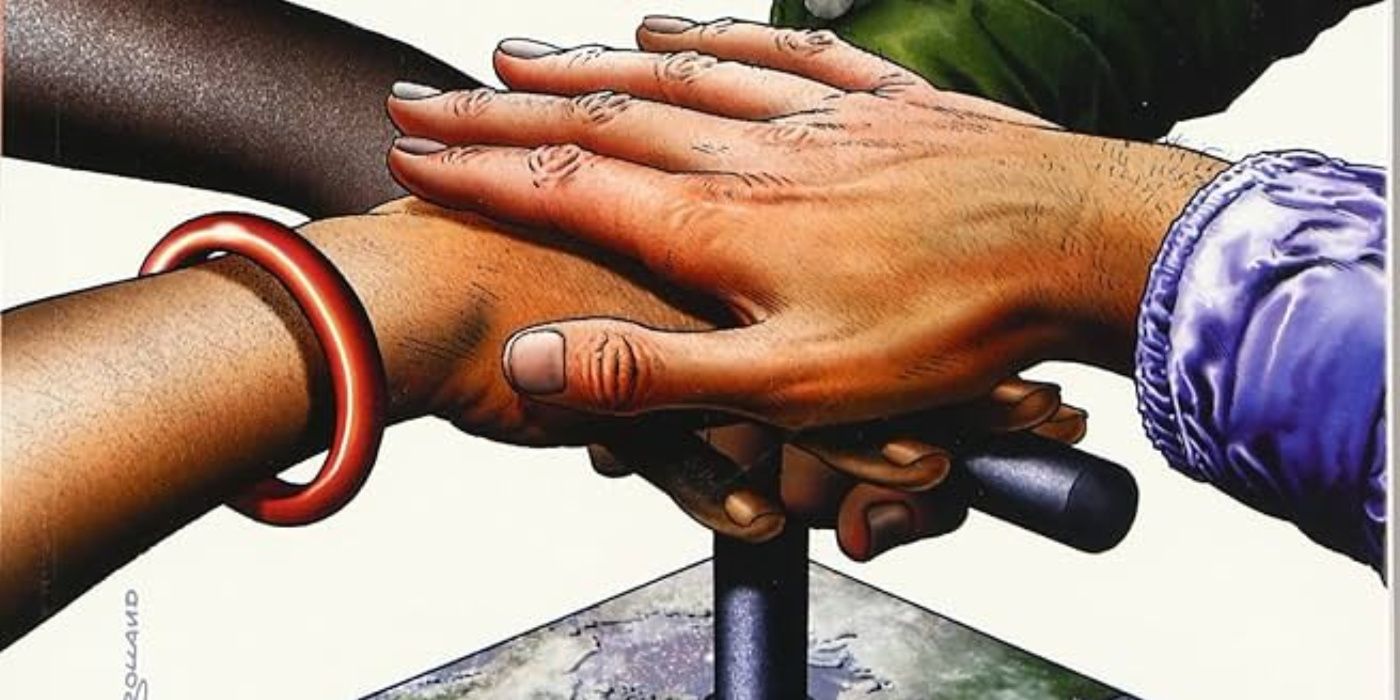Comic books are one of the most versatile mediums in any form of fiction. From horror to comedy, the best comics are universal and timeless. Although some fans only gravitate to the superhero genre, comics have something for everyone, which is well-demonstrated by graphic novels.
Whether it's a collection of stories gathered into one big book, like The Sandman, or an original classic like Uzumaki, graphic fiction catches people's attention and draws readers in. Some of the most recognized comics have been released as graphic novels, while new and award-winning stories debuted in some of the best graphic novels of all time.
Updated on April 15th, 2024 by David Harth: Graphic novels have become a huge part of the pop cultural experience. There are a variety of amazing stories out there from every genre, created by some of the best writers and artists in the world. There are some that rise to the top like cream, and they deserve a perusal from anyone looking for great stories.
50 Hellstar Remina Is Haunting Cosmic Horror
Junji Ito
Junji Ito is a well-trusted name in horror manga. Ito is something of an international superstar, thanks to his haunting stories collected in anthologies and published outside of Japan, with longer stories like Gyo, Tomie, and especially Uzumaki grabbing the attention of fans. Ito's horror takes a variety of forms, and he does cosmic horror as well as anyone else who has worked in the genre. A perfect example of this is Hellstar Remina, a book that combines chilling cosmic horror with a more mundane type - the obsession that fame can create.
- Originally Published: September 2004 to July 2005 in Big Comic Spirits Zokan Casual, American edition published in December 2020
- Awards: 2021 Eisner Award for Best US Edition Of International Material - Asia
Hellstar Remina, published as Remina in the US, revolves around Remina, a teenage girl whose astronomer father named a newly discovered planet after her. Remina becomes popular, but as the sinister nature of the planet is revealed, that popularity turns to murderous obsession as the planet gets closer and closer to Earth. Hellstar Remina is not only pitch perfect cosmic horror, capturing the hopelessness of trying to fight against an uncaring universe, but also calls out Japan's idol culture, which creates pop superstars from attractive young girls and creates obsessed fans that can take things to a terrible level. Hellstar Remina is yet another example of Ito's mastery of the horror genre, his dark and beautiful art bringing the story to life in a brilliant manner.
49 The Incal Is Sci-Fi Unlike Anything Fans Have Ever Experienced
Alejandro Jodorowsky and Jean "Moebius" Giraud
Alejandro Jodorowsky is a visionary director, known for his psychedelic masterpieces like El Topo. In the 1970s, Jodorowsky tried to get a motion picture version of Dune off the ground, creating a script for the movie that would have translated to a fourteen hour long film. Jodorowsky hired many of the greatest artists in the world to illustrate the world he wanted to create, including the French comic superstar Jean "Moebius" Giraud. The movie would never get made, as the budget for it would have been ridiculously high, but Jodorowsky and Giraud's relationship paid off as the two teamed up for a sci-fi comic that would take many of the concepts from Jodorowsky's Dune script.
- Originally Published: 1980-1985 in Metal Hurlant, first collected in 2001 by Humanoids
The Incal took place in the far-off future, set on an insignificat planet in a human-dominated galactic empire. The story starred private investigator/bodygaurd John Difool when he's embroiled in the search for the Incal, an object of infinite power. The Incal is a work of amazing complication and detail, with Jodorowsky using the story to talk about everything from science to messianic religions. The Incal is a gorgeously drawn book, Moebius bringing the brilliant insanity of Jodorowsky's script to life. The Incal became the basis of Jodoverse, a shared universe of comics that spread through prequels and sequels and into Jodorowsky's Metabarons series. This is next level sci-fi, and it will blow the minds of fans going in expecting a Star Wars-style space opera in the best possible way.
48 The Sandman: Season Of Mists Sees Dream Tested To Breaking
Neil Gaiman, Kelley Jones, Mike Dringenberg, Matt Wagner, Malcolm Jones III, P. Craig Russel, Dick Giordano, George Pratt, Steve Oliff, Danny Vozzo, and Todd Klein
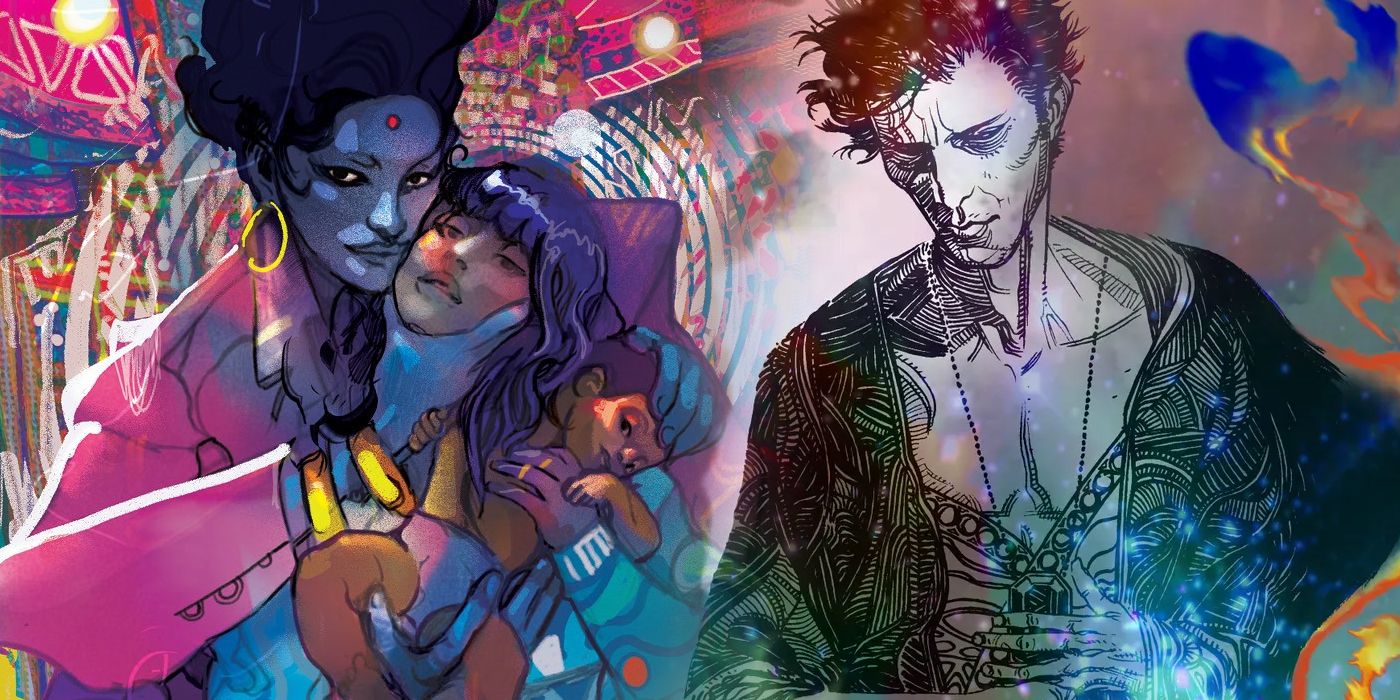
The Many Deaths Of Laila Starr Evokes Neil Gaiman's Sandman Without Copying It
Fans of Neil Gaiman's iconic The Sandman series will find similar themes explored in brand new ways by Boom! Studios' The Many Deaths of Laila Starr.The Sandman is generally considered to be the best mainstream comic of the 1990s, and Season Of Mists is among its most beloved volumes. The story pays off the confrontation between Dream and Lucifer from the book's first storyarc, Preludes And Nocturnes. Lucifer decides to enact his revenge against the Lord of the Dreaming in a brilliant way - Lucifer abandons Hell, giving the key to the infernal realm and making the disposition of it Dream's problem. Soon, the Dreaming is inundated with gods, elves, and demons, all of them wanting Hell and willing to do anything for it. Meanwhile, the dead start to return to Earth, kicked out of their eternal damnation.
- Originally Published: December 1990-July 1991 in The Sandman #21-28
Season Of Mists continued Gaiman's story longform story about Dream, as he's challenged in a way that he's never ben before. The great thing about The Sandman is that each volume goes in a different direction from the one before it, and Seasons Of Mist continues that. The story allows Gaiman to flex his mythology muscles, all while creating a narrative with multiple moving parts that gives readers everything they could want from The Sandman. This story also contains the first appearance of the Dead Boy Detectives, stars of their own Netflix series, and will probably be adapted by the next season of The Sandman. Gaiman and company craft a story that takes a cliche beginning - a revenge plot by the Devil himself - and takes to places where no story had ever gone before.
47 The Invisibles: Entropy In The UK Takes The Story In Terrifying And Delightful New Directions
Grant Morrison, Phil Jimenez, Tommy Lee Edwards, Paul Johnson, Steve Yeowell, Mark Buckingham, John Stokes, Dick Giordano, Danny Vozzo, Clem Robins, and Ellie de Ville
The Invisibles took DC's Vertigo to new levels, as master comic writer Grant Morrison took readers to new places. The Invisibles combined '90s pop culture, conspiracy theories, and the occult in novel ways that was unlike anything on the shelves in the 1990s. The third volume of the book Entropy In The UK combined several story arcs - the titular three part Entropy In The UK, two single issues that fleshed out Invisible member Boy and continuted Jack Frost's enlightenment, Good-Bye Baby Rabbits, and a final single issue story that gave the truth behind Mr. Six - continuing the story from the last volume. King Mob and Lord Fanny have been captured by the Outer Church's Sir Miles, Jack Frost is dealing with his murder of an Outer Church grunt and running in fear from his life, and the team trying their best to save their friends and survive the Outer Church.
- Originally Published: The Invisibles #17-25 from February to October 1996
The previous two volumes built the world of The Invisibles, and Entropy In The UK set the story in a new direction. This book contains the first glimpses of the truth behind the Outer Church and Jack Frost's destiny, testing the bounds of what the story could be. Entropy In The UK ended the first volume of The Invisibles, ending the group's battles in England and preparing the for the next steps in its war. The Invisibles always had some great art, but Phil Jimenez takes it into the next level in this one. While all the artists bring their A-game, Jimenez's art is easily the best in the series, taking all the beauty and torment and rendering it in beautiful detail.
46 Phonogram: The Immaterial Girl Takes A Reader Into The Half-Life Of Emily Aster
Kieron Gillen, Jamie McKelvie, Matt Wilson, and Clayton Cowles
Phonogram is the type of work that only comes about once in a generation. Revolving around British phonomancers - magic users who use music for their runic magic - it's as much about people and their obsessions as it is about the magic based adventures of characters like David Kohl. The third and final volume of the book focuses on Emily Aster, a character who appeared as a senior phonomancer and friend of Kohl's in the previous two volumes, as her identity starts to splinter. The choices she made to become who she is come back to haunt her, and she's forced to face off against the last person she expected - herself.
- Originally Published: Phonogram: The Immaterial Girl #1-6 from August 2015 to January 2016
Gillen and McKelvie are a writer/artist team that is extremely rare in the modern comic industry. The two of them gel together brilliant and Phonogram is the two of them working at a level that few other teams have ever reached. The Immaterial Girl is a story about identity, highlighting the things that people leave behind to become the person they are. It's about the way that the past influences the present, and how difficult it can be to reconcile the different stages of life. Phonogram's three volumes are always deeper than they seem, and this one uses that depth - and a love of pop culture and music of the 1980s - to tell a story that will make readers look at their lives, who they were, who they are, and who they could be, in completely new ways.
45 JLA: The Nail Complete Collection Collects Both Parts Of The Elseworlds Classic
Alan Davis, Mark Farmer, Patricia Mulvihill, Heroic Age, John Kalisz, and Patricia Prentice
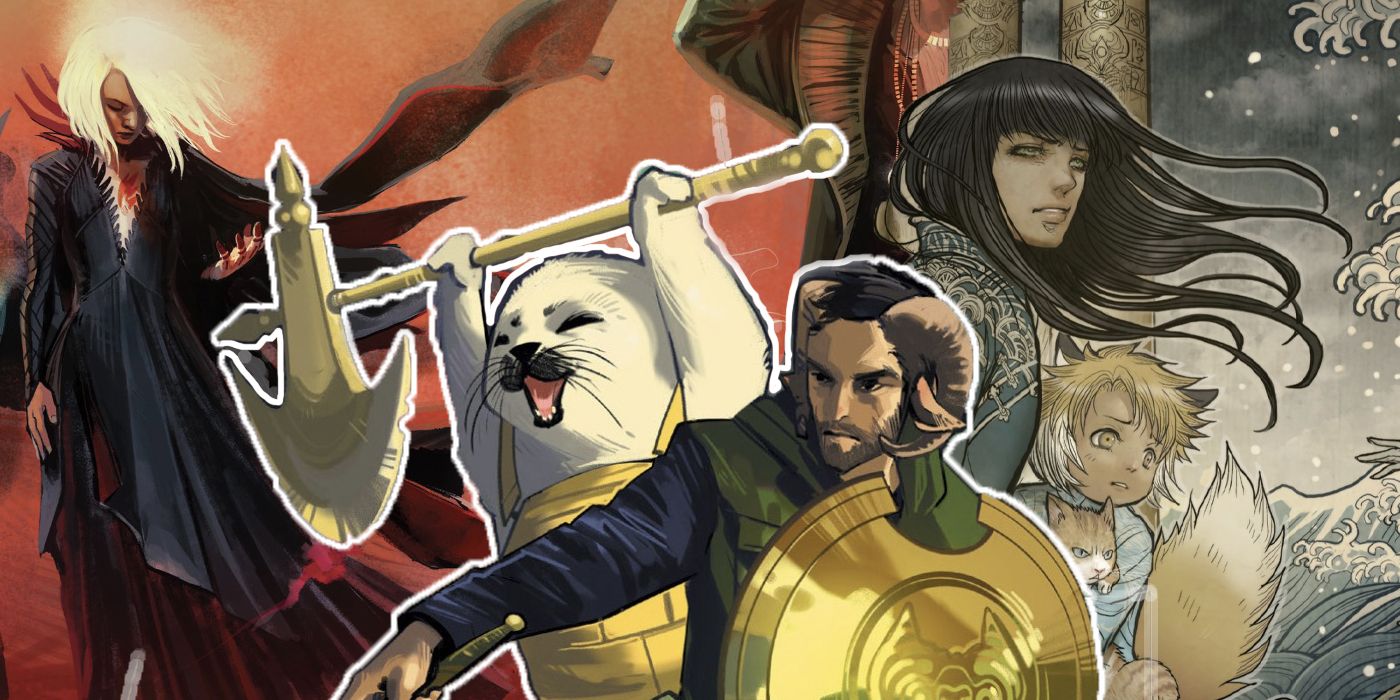
10 Best Image Comics For Non-Superhero Fans
Giving creators space to explore unique settings and narratives, Image Comics has delivered amazing content without relying on superhero stories."Graphic novel" is a phrase that means different things to different people. For some, it's books that are released as a single volume, often ones that aren't superhero related. However, it can also be used to refer to a collected edition of a formerly monthly comic. JLA: The Nail Complete Edition, which collects JLA: The Nail and its sequel JLA: Another Nail, is technically also a graphic novel, telling a full story that was originally two series. . These are Elseworlds stories, taking place in an alternate DC universe.
- Originally published as Justice League: The Nail #1-3 and Another Nail #1-3
Taking place in a universe where the Kents missed Kal-El's rocket because of the titular nail, the story digs into a DC universe that resembles the Silver Age but is also very different. The sequel picks up at the end of the last story, picking up multiple plot lines, some of which seemed like one-offs in the original series. Writer/artist Alan Davis is among the greatest talents in the comic industry, and this collected edition contains his greatest DC work.
44 Rorschach Is The Lone Watchmen Sequel That's Actually Beloved By Comic Fans
Tom King, Jorge Fornés, Dave Stewart, and Clayton Cowles
Watchmen has an interesting legacy in comics. It's widely considered the greatest comic ever, and DC has tried to milk its legacy for everything they could. This has led to some missteps, like Before Watchmen and Doomsday Clock, with many fans believing that any Watchmen sequel is cursed. So, when DC announced a twelve-issue Rorschach series, most fans expected it to be bad. This was compounded by writer Tom King, who many fans loved, but others couldn't stand.
- Originally published as Rorschach #1-12
Rorschach is Watchmen's most popular character, and fans were scared of what King would do with the character. However, King went in an entirely different direction than most expected. The book took place in the '00s, in the continuity of the HBO Watchmen sequel, and followed an unnamed detective as he investigated an attempted assassination of a presidential candidate by Rorschach - who is actually former comic artist Will Myerson, who is heavily based on the Question creator Steve Ditko. The story isn't a whodunit, but a "whydunit", and has a lot to say about the way people can be radicalized. It's an excellent series.
43 StarHenge Book One: The Dragon And The Boar Is Top Shelf Sci-Fi/Fantasy
Liam Sharp
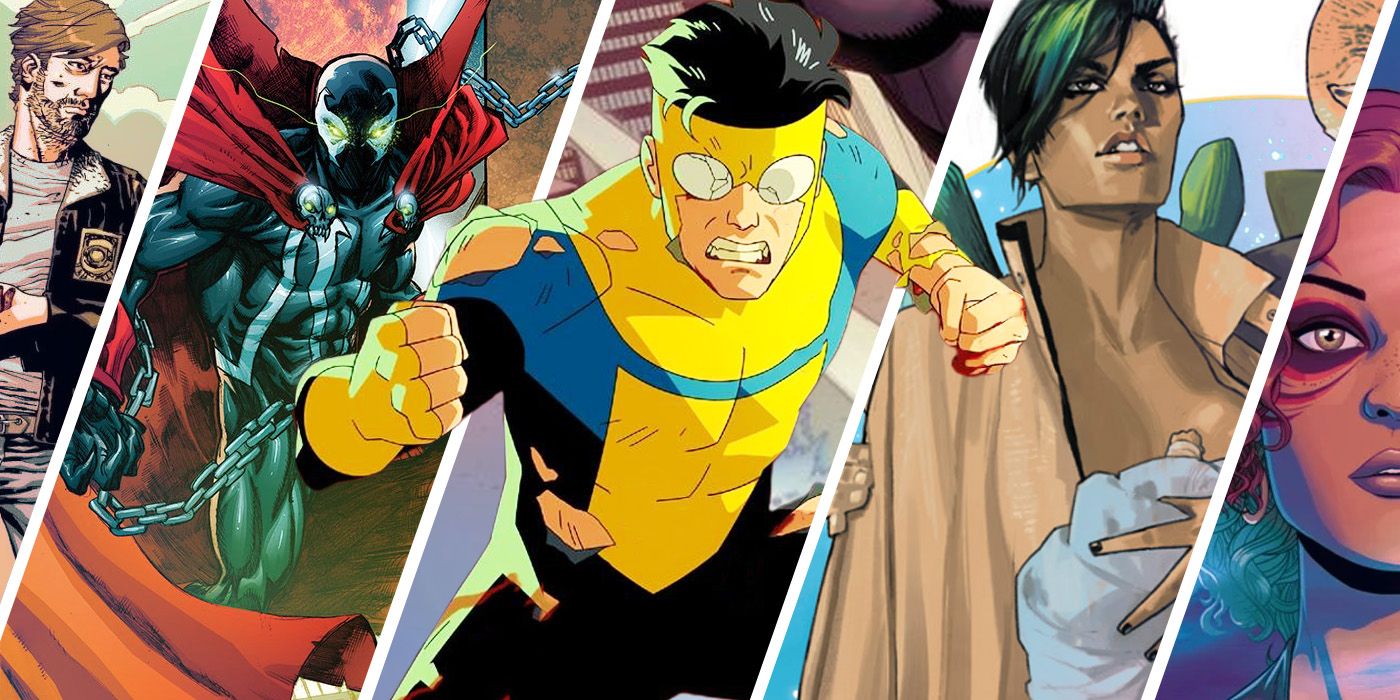
10 Best Image Comics Heroes, Ranked
Image Comics is home to some of the most groundbreaking superheroes in history, and modern icons who don't need superpowers to be the best.Writer/artist Liam Sharp has had a long career in the comic industry, starting out in the 1990s at Marvel UK. Since then, he's had several high profile jobs in the States, but despite being an amazing artist and published novelist, Sharp never got the acclaim that other British creators did. Sharp began teasing a new project on X when it was called Twitter in 2021, one that combined swords and sorcery Arthurian myth with wild sci-fi.
- Originally published as StarHenge Book One: The Dragon And The Boar #1-6
Fans got excited and soon Image Comics got involved, with StarHenge Book One: The Dragon And The Boar premiering in 2022. The story took readers from the present to far in the past and future, as robotic conquerors decide to conquer Earth in the future by going back in time to destroy the roots of magic in Arthurian times, which pulls in a human from the future - who would become Merlin - and a couple in the present. StarHenge is never anything short of brilliant, with Sharp's brilliant art being complimented by his adroit writing.
42 The Sandman: Dream Country Is Where The Book Truly Comes Into Its Own
Neil Gaiman, Kelley Jones, Charles Vess, Colleen Doran, Malcolm Jones III, Robbie Busch, Steve Oliff, and Todd Klein
The Sandman is a beloved book, but it takes a massive upswing in the third volume, Dream Country. Gaiman's first two stories on the book, Preludes And Nocturnes and The Doll's House, are excellent, but they are very much in the vein of the Alan Moore school of DC horror. Dream Country feels like the place where Gaiman finally comes into his own as a writer, and also holds a very special place in the history of comics and literature.
- Originally published as The Sandman #17-20
- The Sandman #19 won the World Fantasy Award for Best Short Story
The four issues are all one and dones, ranging from the brilliant "Calliope" to the unique "Dream Of A Thousand Cats". However, the story that is the standout for many comes from issue 19, "A Midsummer Night's Dream". It continues a plot thread from "Men Of Good Fortune", with William Shakespeare performing the titular play for Dream and the court of Faerie. The story is wonderful, and won a World Fantasy Award for Best Short Story. However, this caused an uproar - that a "mere" comic could win such a high profile award - and the rules were changed so no comic could ever win it again. Dream Country has an amazing pedigree.
41 The Invisibles: Apocalipstick Focuses On The Book's Best Character
Grant Morrison, Jill Thompson, Chris Weston, John Ridgeway, Steve Parkhouse, Paul Johnson Justine Mara Anderson, Daniel Vozzo, Ellie de Ville, and Clem Robins
The Invisibles is Grant Morrison's '90s opus, and its second volume takes the story in entirely new directions. Apocalipstick starts out with a continuation of the cliffhanger from the last volume, then gives readers three one and done stories that set up the world of The Invisibles. The next three issues of the book is "Sheman," a story that gives readers the origin of trans icon Lord Fanny, with the final issue of the book following Jack Frost.
- Originally published as The Invisibles #9-16
Fanny is such an important character because she was one of the few positive trans characters of the '90s - it was basically her, Coagula, and Danny the Street. While the story is dated - mostly due to slang for trans people that is offensive now but wasn't then - it's still a very positive coming of age story for a trans character. On top of that, the single issue stories are brilliant, with The Invisibles #12, titled "Best Man Fall", giving readers the origin of one of the first issue's henchmen, showing how he became who he is and showing there is more to him than just being cannon fodder. Apocalipstick doesn't get the credit its due, but it's an excellent collection.
40 Preacher: Gone To Texas Is The Beginning Of A Classic
Garth Ennis, Steve Dillon, Matt Hollingsworth, and Clem Robins
Preacher is more than it seems at first glance. This '90s DC/Vertigo classic became the publishing imprint's next big book after The Sandman finished up, a mix of over-the-top violence, humor, and heart that took a long hard look at religion and the American spirit. The first volume sees Jessie Custer, a Texas preacher who has lost his faith, possessed by a half-demon/half-angel called Genesis. He accidentally immolates his congregation and learns that God has abandoned Heaven, which sends him on the run.
- Originally published as Preacher (Vol. 1) #1-7 by DC/Vertigo
Custer meets up with his ex-girlfriend Tulip and Irish vampire Cassidy and begins a great American road trip like no other. Gone To Texas collects the first volume of the story and introduces readers to outlandish characters like Arseface as well as Jesse's hideous family. Preacher is a modern classic and its first volume shows why readers love it.
39 These Savage Shores Is A Colonial Vampire Story
Ram V, Sumit Kumar, Vittorio Astone, and Aditya Bidikar
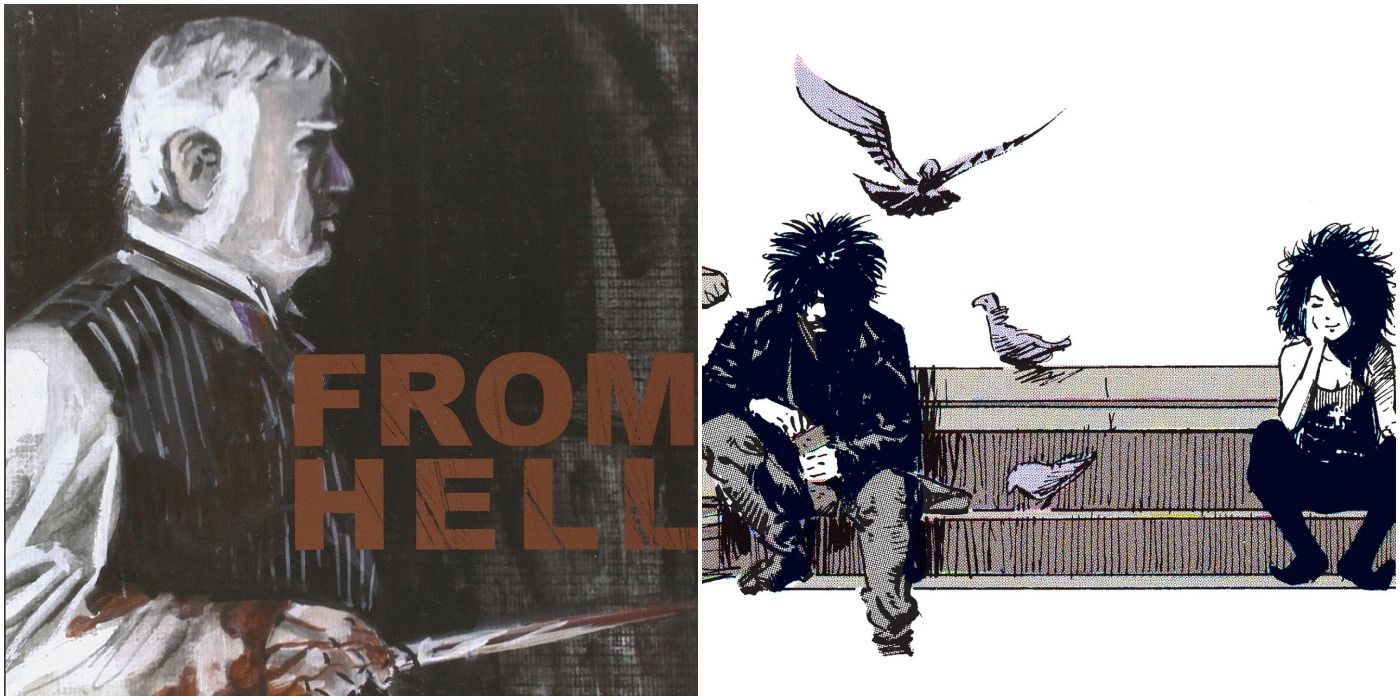
The Best Written Horror Comics Of All Time
Horror works surprisingly well in comics, primarily thanks to the brilliant writing that is some of the best in the comic book medium.These Savage Shores is a vampire tale that takes a turn in directions readers would never imagine. The story sees a European vampire, running from the vicissitudes of the continent, making his way to India, hoping to create his own secret vampire kingdom. However, what he finds is a subcontinent full of monsters just like him, both human and supernatural, and a world that has no place for him.
- Originally published as These Savage Shores #1-5 by Vault Comics
Ram V is known for injecting Indian culture into his work. By including demons like the Rakshasa in his tale, he's injected new life into an old story. While it seems like a classic vampire narrative, the story is also a metaphor for the colonialism that ravaged India. It's a smart horror story that will stick with readers long after they put it down.
38 The Miracleman Omnibus Collects The Classic Deconstructed Superhero Series
Alan Moore, Mick Anglo, Grant Morrison, Garry Leach, Don Lawrence, Alan Davis, John Ridgeway, Chuck Austen, Jon Totleben, Rick Veitch, Joe Quesada, Al Gordon, Rick Bryant, Steve Oliff, Joe Caramagna, and Chris Eliopolous
Miracleman was a lost classic for years. Originally Marvelman in the UK, the characters were based on Fawcett Comics' Captain Marvel and the Marvel Family. They were popular in the 1950s, but as American comics started to make their way to Britain, Marvelman disappeared. Years later, writer Alan Moore got the nod to start doing new Marvelman stories for 2000 AD, which modernized the character. These books were published as Miracleman in the US by Eclipse Comics.
- Collects A1 #1, Warrior #1-18 and #20-21 as presented in Miracleman #1-16 and All-New Miracleman Annual #1
Eclipse Comics went out of business, and Neil Gaiman fought Todd McFarlane for the rights to Miracleman since Gaiman took over the series after Moore left. Gaiman won the legal battle and gave the rights to Marvel. Marvel reprinted the series, both as single issues and collected editions, but then left it dormant for years. The Miracleman Omnibus collects Moore's run on the book, retelling the classic story of a superhero who turns his world into a flawed utopia.
37 The Sandman: The Doll's House Continues Dream's Story
Neil Gaiman, Mike Dringenberg, Chris Bachalo, Michael Zulli, Malcolm Jones III, Steve Parkhouse, Robbie Busch, John Constanza, and Todd Klein
Almost every volume of The Sandman is brilliant. The Doll's House, Gaiman's second installation in the series, continues Dream of the Endless's story as he tries to rebuild the Dreaming after his long absence. It begins with a tale of long ago, when Dream meets a mortal woman named Nada and falls in love, knowing that their relationship is doomed because he's an eternal being and she's human.
- Originally printed as The Sandman (Vol. 2) #9-16 by DC Comics
From there, Dream discovers that four of his "Major Arcana" are missing from the Dreaming — Brute, Glob, Fiddler's Green, and the nightmare who calls himself The Corinthian. Dream goes to the waking world to find them, just as a teenager named Rose Walker goes on her own voyage of discovery in The Dreaming. This story is brilliant and shows off so much of what Gaiman's work does best, from classical allusions to gorgeously crafted narratives. The Sandman is a treasure and this second volume is the perfect introduction to the series.
36 Phonogram: The Singles Club Perfectly Captures A Night Out From Multiple Perspectives
Kieron Gillen, Jamie McKelvie, Matthew Wilson, and Clayton Cowles
Phonogram wears its love of music on its sleeve, and The Singles Club makes this its greatest strength. The seven-issue miniseries captures a supernatural night at an indie music club. Each issue is focused on another young phonomancer, or musical mage, as they navigate this night, blending their stories, and then diverging in interesting ways. It's brilliant and the highlight of the three-volume series.
- Originally printed as Phonogram: The Singles Club #1-7
Phonogram is an unconventional book, and The Singles Club elevates its eccentricities to new levels. It's a character piece, each issue digging into another character. It does an amazing job of capturing a night out — the thump of the bass, the sweaty dancers, and the smell of cigarettes. It's a love letter to a bygone era and a great urban fantasy piece.
35 Squadron Supreme Is A Smart Superhero Deconstruction
Mark Gruenwald, John Buscema, Bob Hall, and Paul Ryan
Squadron Supreme is the OG of superhero deconstruction. Premiering in 1984, a year before Watchmen, Squadron Supreme follows Marvel's version of the Justice League as they decide that the best way to protect the Earth is to rule it as benevolent dictators. A heartbreaking, cohesive story, the 12-issue series displays the triumphs and tragedies scattered throughout their reign, that's only supposed to last a year.
- Published 1984-1985 by Marvel Comics
Squadron Supreme doesn't get the attention that Watchmen does. There are several reasons, but the main one is that is much more of an overt superhero title, without the literary trappings of Moore and Gibbons' masterpiece. However, that's no reason not to read it. It's an entertaining, thought-provoking comic, far smarter than it initially seems.
34 The Sandman: Endless Nights Focuses On Comics' Best Dysfunctional Family
Neil Gaiman, P. Craig Russell, Milo Manara, Miguelanxo Prado, Barron Story, Bill Sienkiewicz, Glenn Fabry, and Frank Quitely
Neil Gaiman's The Sandman is considered a major milestone in comics. Its run from 1989 to 1996 gave readers brilliant stories and introduced fans to the most powerful family in existence: the Endless. It's an entire menagerie of fan favorites, from the bleary-eyed Delirium to the scheming Desire, and Death and Destiny each helmed at least one miniseries each. DC announced that The Sandman would return in 2003 in a hardcover called Endless Nights, with stories that focused on each member of the Endless.
- Published in 2003 by DC/Vertigo
Endless Nights's seven chapters cover the gamut of the Endless' existence. These stories take place in the distant past, the present, and the future. There's not technically a single narrative that weaves them all together — although the Delirium and Destruction chapters are closely related — but the book doesn't need that. It's a brilliant chapter in The Sandman mythos, bringing readers closer to the unknowable by focusing on the Endless.
33 God Loves, Man Kills Is X-Men Perfection
Chris Claremont and Brent Anderson
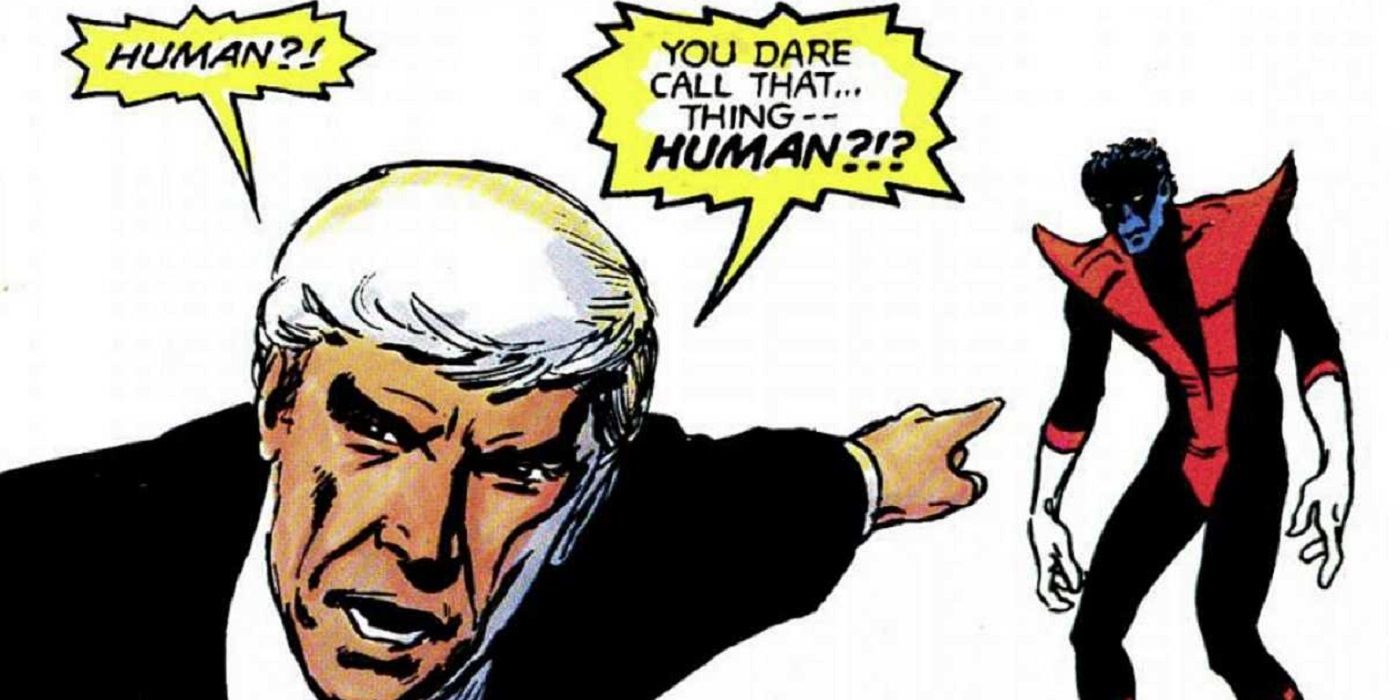
How Did God Loves, Man Kills Become Official Marvel Continuity?
In a feature spotlighting instances of non-continuity stories later becoming canon, X-Men shows how God Loves, Man Kills became continuity.The X-Men's central civil rights metaphor doesn't always come through. This is the inherent problem with mainstream superhero titles that try to incorporate actual messages. Fans want the superhero stuff so much that sometimes creators forget to do anything more than play lip service to the message. Marvel has always had this problem and is arguably worse now, but a story like God Loves, Man Kills combines superheroics and a powerful message seamlessly.
- Published in 1982 by Marvel
God Loves, Man Kills makes the X-Men team up with their greatest foe, Magneto, to battle Reverend William Stryker and the Purifiers. Stryker uses his religion as a cudgel to use against mutants. Claremont and Anderson found a way to make the X-Men work with their central metaphor and with the superheroics that enticed fans. God Loves, Man Kills is a masterpiece that has stood the test of time for over forty years.
32 The Invisibles: Say You Want A Revolution Launches An Underrated Epic
Grant Morrison, Steve Yeowell, and Jill Thompson
Grant Morrison's The Invisibles is timeless. Informed by the conspiracies of the 1990s, The Invisibles: Say You Want A Revolution introduces readers to Dane McGowan, a teenage Scottish hooligan who is about to learn that he's the next Buddha. Dane almost falls victim to the Outer Church, the secret kings of the world. He's saved by King Mob and soon finds himself in a world of magic and anarchy, wonder and terror, beautiful life and painful death.
- Published in 1994 by DC/Vertigo
The Invisibles' opening volume is still brilliant all these years later. Morrison does some amazing world-building here, introducing readers to the book's cast, and throwing readers into the deep end immediately. It's violent, profane, hilarious, and harrowing, all at the same time. The Invisibles will worm its way into readers' minds and never leave, sowing the seeds of revolution for generations to come.
31 Crisis On Infinite Earths Is Comics' Biggest Epic
Marv Wolfman, George Pérez, and Jerry Ordway
The Silver Age was technically over by 1985, but it was truly put to rest by Crisis On Infinite Earths. Crisis wasn't the first massive event comic, but it was the best of its time. For many readers, it's still the best comic event ever. The book pits the heroes of the DC Multiverse against the Anti-Monitor with the fate of all existence at stake. It defined what epics would be in comics going forward.
- Published: 1985 by DC Comics
Crisis On Infinite Earths is a snapshot of a bygone time and can be a bit difficult for readers who aren't educated on the various alternate Earths and their heroes. However, even for readers who don't know their DC lore inside and out, Crisis still works because of its scope. Worlds lived, worlds died, and nothing was the same afterward.

